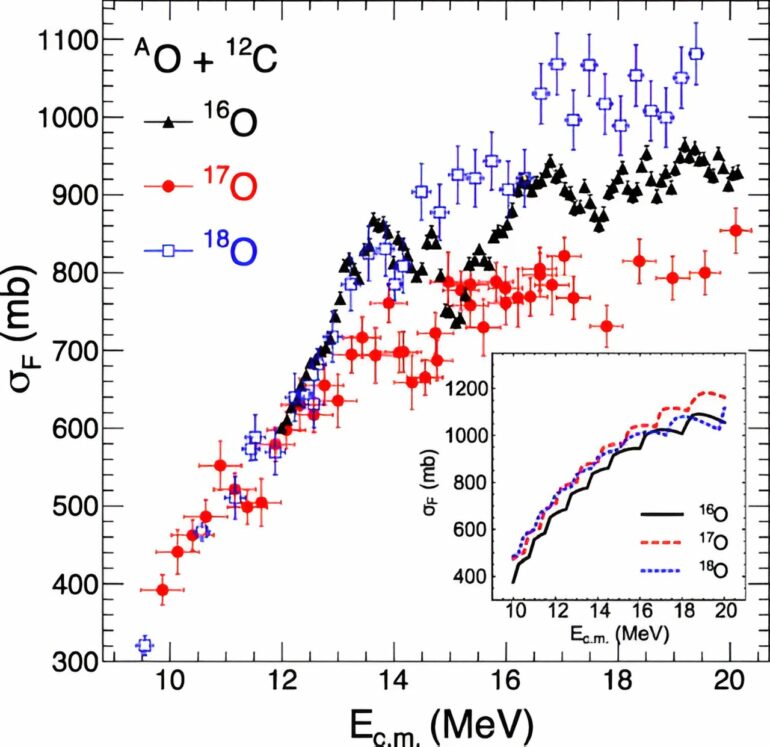The fusion of two nuclei is a complex process influenced by many factors. These factors include not only the relative energy and angular momentum of the two nuclei, but also how their structures evolve as they collide. The outcome of the collisions is dramatically impacted by the quantum nature of the nuclei. The best way to handle the underlying complexities is to directly simulate how the nuclei evolve as they collide, though this constitutes a massive computational effort.
In a new study, researchers have performed the most comprehensive computation to-date of fusion reaction processes. The study used supercomputing facilities to perform thousands of time-dependent simulations.
The work is published in the journal Physical Review C.
Nuclear fusion, the process of merging two nuclei into one, is important to basic science and as a potential carbon-free power source. In this study, researchers achieved an improved description of fusion by directly simulating the reaction process. The remaining differences between the simulation results and measured fusion probabilities from experiments point to phenomena that are unexplained by current theories. Scientists expect these phenomena to be more prevalent in the reactions of short-lived rare isotopes at next-generation radioactive beam facilities.
This study measured the probability of fusing oxygen isotopes with carbon nuclei as a function of energy. The research found a remarkable non-smooth, oscillatory behavior in the high-resolution experimental data for the dependence of the fusion probability on the collision energy of the oxygen-carbon system. By combining advanced theoretical methods, high-performance computing, and high-resolution experimental measurements, the study offers the clearest picture to date of colliding complex nuclei.
The improved model of nuclear collisions shows great promise in describing the intricacies at play in nuclear fusion. Examining the present differences between experiment and theory will provide insights into presently unexplored factors that affect the fusion process. These unexplored factors will become more pressing as reactions of increasingly short-lived, rare isotopes become a more important research area at facilities such as the Facility for Rare Isotope Beams, a Department of Energy user facility at Michigan State University.
More information:
R. T. deSouza et al, Search for beyond-mean-field signatures in heavy-ion fusion reactions, Physical Review C (2024). DOI: 10.1103/PhysRevC.109.L041601. On arXiv: DOI: 10.48550/arxiv.2309.15327
Provided by
US Department of Energy
Citation:
Researchers directly simulate the fusion of oxygen and carbon nuclei (2024, July 15)



